How to raise Cymbidium the breeding methods and points for attention of Orchid
Gentleman orchid should be a kind of flower that is often raised in home life now. There has been a gentleman's love of flowers since ancient times, and a gentleman's flower cultivation has been praised since ancient times. How to raise the potted orchid well, we need to know the breeding methods and matters needing attention in the maintenance.
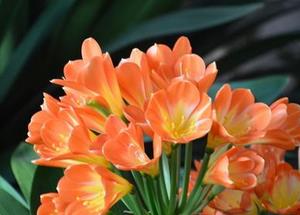
First, Magnolia is a perennial herb of the genus Amaryllidaceae, with a florescence of 30 to 50 days, mainly in winter and spring, and New Year's Day also blooms before and after the Spring Festival. Avoid strong light, for semi-negative plants, like cool, avoid high temperature. The optimum temperature for growth was 15 ~ 25 ℃, and stopped growing when the temperature was below 5 ℃. Winter is the golden stage for the growth of Magnolia.
Second, the types of magnolia:
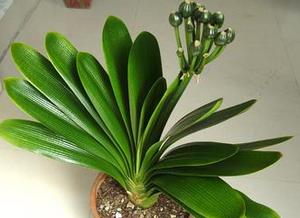
There are many varieties of Cymbidium, such as Cymbidium seedlings (5murmur30), flowering Cymbidium (50 +), and Cymbidium with good varieties (thousands of varieties that depend on the variety are generally priced between 50 and 150, or higher). The price of magnolia is determined by its quality. A gentleman orchid can be judged from four aspects: brightness, fineness, stiffness, thickness and so on.
one. Brightness refers to the degree of reflection on the leaf surface, in the following order: oil bright, bright, slightly bright, not bright.
two. The degree of fineness refers to the degree of smoothness and delicacy of the blade surface, in the following order: delicate, relatively delicate, generally delicate, relatively rough, rough.
three. Stiffness refers to the degree of bending resistance of the blade as a whole or the degree to which it would rather bend than bend, in the following order: strong, strong, weak and weak.
four. The thickness refers to the thickness of the mesophyll in the cross section of the leaf, the smaller the difference between the edge and the middle of the leaf, the better, in turn: 2. 2mm 、 2mm 、 1 . 8mm 、 1 . 6mm 、 1 . Below 4mm.
Third, the culture methods of Cymbidium:
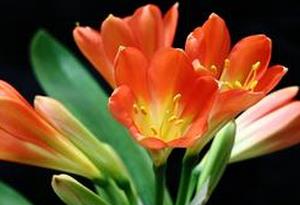
I. Culture methods
Immediately into the midsummer, so friends should pay special attention to the breeding method of magnolia, above has said to you, oh, gentleman orchid is afraid of the sun. So to protect yourself from the sun, there are a few other reasons to pay special attention to:
1. Prevent direct sunlight and do not expose yourself to the sun
The magnolia in summer should cover the strong light all day. Using the oblique light of the sun for a while every morning is enough to satisfy photosynthesis.
2. Prevent high temperature, do not dry
The summer temperature of gentleman orchid is 18 ℃-25 ℃, it is best to put it in an air-conditioned room, or in a balcony shaded and ventilated place. When watering, it is best to use tap water that has been insolated for two or three days, and water once after 6 o'clock every afternoon, do not make the basin soil too dry or too wet.
3. Prevent apprentices from growing, do not apply fertilizer
Summer is the dormant period of Magnolia, stop fertilization, moderate watering, humidity control is an effective measure. If the pot soil is overfertilized or the fertilizer effect is large, the soil in the upper part of the flowerpot should be poured out and mixed with the sand of 1, 3, 2, 2 and 3, which can not only reduce the fertilizer effect, but also play a cooling role.
4. Prevent dust pollution and do not pour dirty water
The leaves of Cymbidium should be kept clean, dipped in water with fine gauze every week, wrung out and gently dabbed once. Pouring dirty water will cause the roots and leaves to rot and turn yellow.
5. prevent soil consolidation and do not use clay (loess) into the basin.
The gentleman orchid is adapted to be loose, breathable, permeable, fertile and with a PH value of 7. About 0. 0 in humus soil.
6. Prevent diseases and do not get infected
When changing soil or wiping leaves, the action should be light to prevent the root leaves from breaking and flowing out of juice, causing infection to cause ulceration.
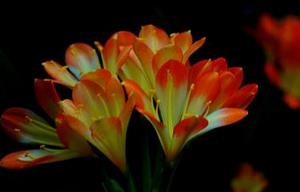
Fourth, matters needing attention during the breeding period:
1. Like semi-overcast cool environment, avoid high temperature, strong light and dryness. The suitable temperature for growth is 25 degrees, which is lower than 5 degrees. When the high temperature is about 30 degrees, the narrow and long leaves affect the ornamental, so it is necessary to cool down in time.
During the growing period, the basin soil should be kept moist, and the basin soil should be dry during the high temperature and semi-dormant period, and more water should be sprayed on the leaf surface to achieve the purpose of cooling.
The gentleman orchid likes fertilizer and changes the basin every 2 to 3 years in spring and autumn, adding rotten leaf soil in the basin soil.
The basin should be turned frequently to prevent the blade from leaning to one side.

2. The soil-changing season for gentleman orchids is coming. Changing soil for Cymbidium has certain technical requirements, which will not only affect the normal growth of Cymbidium, but also endanger the life of Cymbidium. When changing soil for magnolia, we should pay attention to the following aspects.
(1) it should not be dug with sharp weapons to prevent root injury. The correct method is: hold the false bulb of the plant with one hand, hold the flowerpot with the other hand, slowly turn it upside down, gently tap the edge of the pot on Muden and other things, and the plant can come off. If it is a large pot plant, it should be operated by two people. One person holds the false bulb in both hands, and the other person slaps the outer wall of the basin and slowly pulls it up.
(2) after the plant is poured out of the basin, it is necessary to gently peel off the soil around the root system, and do not drop it violently, so as not to cause root damage. In the arrangement of the root system, in addition to remove part of the old root and rotten root, hollow root, no matter how long the root should not be cut off. If the long root system is cut off, it will not only lose the absorptive part of the root hair, but also affect the growth of the orchid in the future, but also easily cause the root to be infected by bacteria and lead to rot.
(3) attention should be paid to whether the selected basin floor is flat and whether it is conducive to drainage.
(4) when loading the soil into the basin, attention should be paid to filling the soil between the roots, so that the roots are closely combined with the soil, which is beneficial to the root system to absorb nutrients in time.
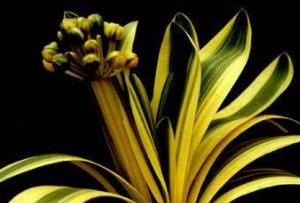
What kind of fertilizers are commonly used in gentleman orchids
1. Liquid fertilizer
Including all kinds of fermented cakes, blood and fresh fish fermented water are liquid fertilizers. For example, soybeans, bean cakes, sesame dregs, horseshoes and fish fermented with water are all good liquid fertilizers.
2. Solid fertilizer
The seeds, oil meal, horseshoe palm, and bone meal of all kinds of oil craftsmen are solid fertilizers. Such as sesame seeds, perilla seeds, castor seeds, peanuts, sunflower seeds, pine seeds, soybeans, sesame and so on.
Note: for the flowerpot that needs to be changed, the flowerpot must be watered once the day before the soil change. when changing the pot, the potted flower is placed obliquely on the ground, holding the false bulb of the plant with one hand and the flowerpot with the other, slowly upside down, tapping the edge of the pot on the wooden stool, and the plant will come off. If you change the pot for an adult orchid over 4 years old, it should be operated by two people, that is, one person holds the false bulb of the plant with both hands, and the other holds the flowerpot with both hands, tapping the edge of the pot on the wooden stool, and the plant can be removed. When the gentleman orchid takes the soil mass out, be careful not to break the soil mass, so as not to damage the root system.
It may even endanger the life of Gentleman. When changing soil for magnolia, we should pay attention to the following aspects.
(1) it should not be dug with sharp weapons to prevent root injury. The correct method is: hold the false bulb of the plant with one hand, hold the flowerpot with the other hand, slowly turn it upside down, gently tap the edge of the pot on Muden and other things, and the plant can come off. If it is a large pot plant, it should be operated by two people. One person holds the false bulb in both hands, and the other person slaps the outer wall of the basin and slowly pulls it up.
(2) after the plant is poured out of the basin, it is necessary to gently peel off the soil around the root system, and do not drop it violently, so as not to cause root damage. In the arrangement of the root system, in addition to remove part of the old root and rotten root, hollow root, no matter how long the root should not be cut off. If the long root system is cut off, it will not only lose the absorptive part of the root hair, but also affect the growth of the orchid in the future, but also easily cause the root to be infected by bacteria and lead to rot.
(3) attention should be paid to whether the selected basin floor is flat and whether it is conducive to drainage.
(4) when loading the soil into the basin, attention should be paid to filling the soil between the roots, so that the roots are closely combined with the soil, which is beneficial to the root system to absorb nutrients in time.

What kind of fertilizers are commonly used in gentleman orchids
1. Liquid fertilizer
Including all kinds of fermented cakes, blood and fresh fish fermented water are liquid fertilizers. For example, soybeans, bean cakes, sesame dregs, horseshoes and fish fermented with water are all good liquid fertilizers.
2. Solid fertilizer
The seeds, oil meal, horseshoe palm, and bone meal of all kinds of oil craftsmen are solid fertilizers. Such as sesame seeds, perilla seeds, castor seeds, peanuts, sunflower seeds, pine seeds, soybeans, sesame and so on.
Note: for the flowerpot that needs to be changed, the flowerpot must be watered once the day before the soil change. when changing the pot, the potted flower is placed obliquely on the ground, holding the false bulb of the plant with one hand and the flowerpot with the other, slowly upside down, tapping the edge of the pot on the wooden stool, and the plant will come off. If you change the pot for an adult orchid over 4 years old, it should be operated by two people, that is, one person holds the false bulb of the plant with both hands, and the other holds the flowerpot with both hands, tapping the edge of the pot on the wooden stool, and the plant can be removed. When the gentleman orchid takes the soil mass out, be careful not to break the soil mass, so as not to damage the root system.
- Prev

How to raise Jasper Picture appreciation of Jasper
How to raise Jasper Picture appreciation of Jasper
- Next

How to cultivate hydroponic green pineapple the culture methods and matters needing attention of hydroponic green pineapple
How to cultivate hydroponic green pineapple the culture methods and matters needing attention of hydroponic green pineapple
Related
- Wuhan Hospital Iron Tree Blooming Result Was Instantly Frightened by the Gardener Master
- Which variety of camellia is the most fragrant and best? Which one do you like best?
- What is the small blue coat, the breeding methods and matters needing attention of the succulent plant
- Dormancy time and maintenance management of succulent plants during dormancy
- Minas succulent how to raise, Minas succulent plant pictures
- What are the varieties of winter succulent plants
- How to raise succulent plants in twelve rolls? let's take a look at some experience of breeding twelve rolls.
- Attention should be paid to water control for succulent plants during dormant period (winter and summer)
- Watering experience of twelve rolls of succulent plants
- Techniques for fertilizing succulent plants. An article will let you know how to fertilize succulent plants.

